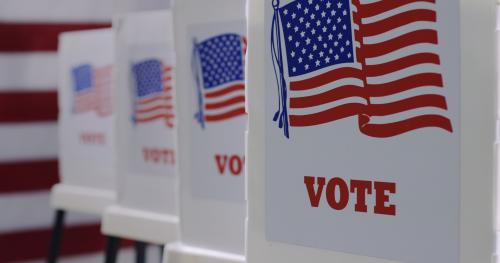According to an old bit of folk wisdom, if one person says you are drunk, you can wave him off. If two people tell you, go home.
When UnitedHealth Group announced a few months back that it was going to stop selling individual health insurance in most Obamacare exchanges, informed observers were not alarmed. They noted that nearly all exchange customers still had at least two, and most had three or more, insurers competing for their business.
Now with Aetna’s announcement that it will stop selling insurance in 11 of the 15 states where it has been active and will abandon previously announced expansions in five others, Obamacare supporters are worried. And with good reason. If too many insurers jump the Obamacare ship, customers will be left adrift.
Fortunately, there is a simple way to reduce this risk. It was crafted in the District of Columbia by the D.C. Health Benefit Exchange Authority: Make the Obamacare exchange one big marketplace for everyone buying individual health insurance coverage. Nationwide, this would merge the 12 million people who get their insurance through Obamacare with the roughly 9 million who buy their policies outside the exchanges.
To understand the problem bedeviling Aetna and other insurers — and the solution — one has to understand five key features of individual insurance markets.
• The price insurers charge non-exchange customers for a given plan has to be the same as what they charge Obamacare customers.
• The vast majority (about 85 percent) of exchange customers nationwide qualify for the program’s tax credits and cost-sharing subsidies because their incomes are below four times the federal poverty threshold — $97,000 for a family of four this year — and they are not offered affordable coverage through employment or some federal program. To obtain that help, customers must buy insurance through the Obamacare exchanges, rather than directly from insurance companies.
• Those eligible for that assistance tend to be sicker than those who don’t qualify because those with comparatively low incomes have poorer health on average than people with higher incomes.
• Obamacare bars insurers from keeping more than 20 percent of premium income from insurance sales in the individual market to cover marketing costs, administration and profit. Before Obamacare, all companies could keep more, and many did.
• Some insurers face heightened financial risks because an unusually large proportion of Obamacare exchange customers are new customers — 50 percent of Aetna’s 2016 enrollees, for example. In the old days, insurers could question new customers and charge very high premiums to those having characteristics associated with high health-care use. No longer. Obamacare allows premiums to vary by only a few factors, such as the age of the insured. To protect companies from getting hammered by an excess of high-cost customers, Obamacare compensates companies with such customers with funds transferred from companies that cover few of them. But this “risk-adjustment” system hasn’t worked as well as hoped.
Given all this, it is hardly surprising that Aetna and UnitedHealth, confronting losses and heightened risk, would desert many Obamacare health exchanges. In some states, insurers are abandoning the individual market altogether because they must insure even high-risk customers and cannot charge them enormous premiums.
Fortunately, there is a good fix for much of this problem. From the day it opened its doors, the D.C. Health Exchange has required that all individual insurance policies be purchased through the D.C. exchange. Accustomed to buying coverage directly from insurance companies, some customers grumbled. The botched rollout of the federal government’s health exchange, HealthCare.gov, added to their worries.
To its credit, the D.C. exchange avoided most of those problems. It has provided nearly uninterrupted service since its opening late in 2013. Once enrolled, customers’ applications go directly to the private company of their choice, where service is the same as it would have been had they applied directly to the insurer. Because the D.C. individual market is one big marketplace, there is no “inside” and “outside” the exchanges, with profit in one area and loss in the other.
So far, only one state, Vermont, has adopted the same framework as the District. But if the federal exchange and all of the other state exchanges were to adopt the “one big marketplace” rule, the risk that insurers such as Aetna and UnitedHealth would selectively abandon customers in Obamacare exchanges would evaporate. Merging the relatively healthy individuals who now buy coverage outside the exchanges with those using Obamacare would help stabilize insurance for the whole group.
Predictably, insurers might balk at facing intensified competition they’re unaccustomed to. Some would incorrectly allege that customer choice had been limited. But in truth, customers would have expanded choice and improved service, because the exchanges can provide them unbiased information about coverage, costs and networks under all insurance plans.
Creating one unified market would not solve every problem that insurers now confront. They would still have to learn how to manage risk in a world where they cannot charge absurdly high premiums or deny insurance to anyone. But establishing one big marketplace in each and every Obamacare exchange is low-hanging fruit, waiting to be plucked.
Editor’s note: This piece originally appeared in the Washington Post.



Commentary
Op-edHow to rescue Obamacare as insurers drop out
August 22, 2016